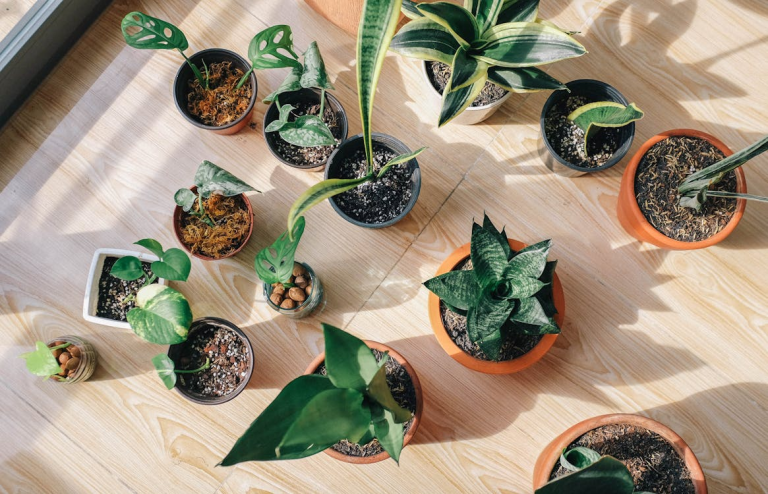Many people who wish to streamline their lives have observed the minimalist design trend in recent years. This design concept’s straight lines, neutral colors, and lack of clutter produce an efficient and peaceful environment.
Sometimes, people object to minimalist homes because they seem impersonal or chilly. Many minimalists include nature—especially indoor plants—into their homes to counteract this. This approach enhances look and wellness.
You may design a calm, green haven in your minimalist surroundings by carefully selecting and arranging plants.
Minimalism and Air-Purifying Plants
Although natural aspects improve this design approach, minimalism aims to eliminate excess and concentrate on what matters. Plants fit simple settings, especially air purifying plants. More than just decoration, snakes, spiders, and peace lilies do for your house.
These filters help to clean the air by removing toxins. This ability of air-purifying plants conforms to the minimalist idea of utility and well-being. Perfect for clutter-free, light living areas, these plants offer maximum benefits and require minimum maintenance.
Choosing Plants for Your Space
While selecting plants for a minimalistic space, one should consider the plant’s features and the design of the room. Select plants with simple lines and little embellishment.
With its broad, glossy leaves and upright growth, the rubber plant lends sculptural without overwhelming a space. The dark green, waxy leaves of the ZZ plant accentuate simple décor by their strong, understated presence.
Furthermore, the plant’s scale is crucial to its surroundings. In smaller settings, a large, bushy plant might overwhelm the openness of minimalism.
Choose smaller, vertical-growing plants instead. Popular because their long, narrow leaves provide the impression of height without using much space, snake plants
Integrating Plants Into Minimalist Interiors
Once you get the right plants, gently arrange them in your understated house. Proper plant arrangement depends on minimalism’s harmony and balance. Place a beautiful plant in an area that needs softening or near some furnishings. This highlights the plant and keeps the surroundings clutter-free.
Plants clustered in three or five odd numbers look great for a more subdued integration. Depending on the type and size of the plant, these clusters might be set on a floor, shelf, or windowsill. Matching the décor with neutral-colored pots will let the plants enhance the area without compromising its simple beauty.
The Benefits of Green Minimalist Space
Plants in understated environments serve purposes beyond decoration. They make your house more beautiful and healthier by reducing stress, increasing output, and changing mood. Even basic plant care can improve your well-being by providing a feeling of purpose and leisure.
Minimalism accentuates biophilic architecture, therefore fostering harmony between humans and nature. Including nature in your residence will create a lovely and ecologically responsible environment. This approach supports the minimalist concept of living with intention by encouraging attention and respect for the simplicity and beauty of nature.
Conclusion
One careful and satisfying undertaking that enhances the appearance and use of your minimalist house is greening it. Selecting the right plants and including them in your design will help create a lovely, healthy environment. Whether you choose one statement plant or a well-chosen collection, greenery will liven your minimalist house and establish a haven of simplicity and peace.

